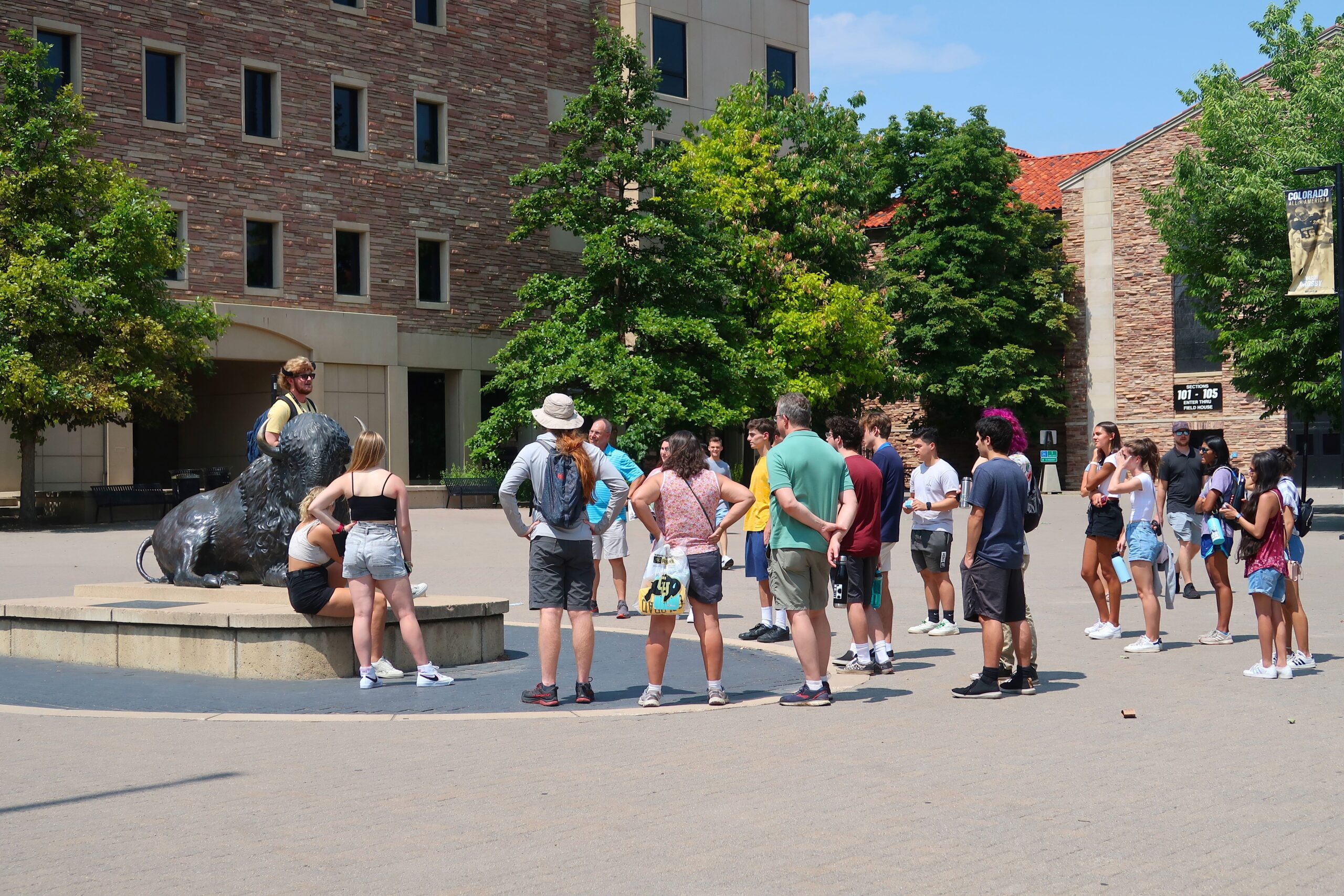
Stamats Insights
June 26, 2024

Struggling with enrollment? You’re not alone. As high school graduation rates decline, enrollment in higher ed is becoming more competitive. This drop in numbers is called the enrollment cliff. You’ll need to fend off more competitors to see numbers you’ve reached in years before.
But all is not lost. You can do things today to boost your enrollment numbers for years to come. You can boost enrollment for this and future cycles with some key steps.
It all comes down to keeping organized, understanding your data, and finding the chinks in your enrollment armor. Sound like a lot? We’ll dive into specifics to make the whole process easier to understand. You might not be able to finish all these processes today, but you can take a first step toward better enrollment before the clock strikes 5 PM.
It’s time to break out your best secret agent disguise. Mystery shopping is a technique used in market research to determine any gaps in the customer’s (or in your case, the prospective student’s) experience. It involves evaluating various parts of the customer interaction through the eyes of an undercover shopper. You’ll be taking on a persona, either a high school junior or senior, a parent, or an adult-learner student. You’ll then audit portions of the customer experience, such as contacting your customer service desk through phone or email, completing the application process, and following the links from your marketing collateral to your application.
Here are some questions you should ask as part of mystery shopping:
After you’ve answered these questions, take note of the communication that did or didn’t happen. Now it’s time to get into investigative mode. Where did the experience break down, and how can you improve it?
Often, bottlenecks can be explained by broken links, outdated emails, and missing timely communications. It’s difficult to keep every aspect of your website, digital communications, and marketing collateral updated. That’s where Stamats comes in. We continually keep your assets up to date, so you don’t experience easily avoidable bottlenecks.
Does analyzing your recruitment data fill you with dread? Do you have images of digital cobwebs and disorganized files? That means it’s time to clean things up.
When your data isn’t organized, your marketing isn’t either. That’s because disorganized data leads to inefficient targeting and a lack of insight into your audience’s performance. For example, imagine sending out recruitment emails to students interested in engineering when they’re passionate about art. Or sending a high school junior communications meant for adult students. Clean data helps you properly segment and tailor your communications.
So how exactly do you clean your data? Unfortunately, it can take some time. If you have more than 250-500 records to update, check with campus IT to see if any tools are available to help you align your data.
The best enrollment data is free of typos and grammar mistakes and contains important fields such as:
Pro Tip: For additional information you should consider gathering, check out the “Recruitment and Applicant Data Sets” chapter of my book, Enroll More Now, available on Amazon.
While cleaning your data might take some time, there are questions you can ask today to jumpstart the process.
By asking yourself these questions you can set goals for you and your team to gradually improve the integrity of your recruitment data.
Remember, investing time and resources into cleaning your recruitment data pays off in dividends by enabling more effective targeting, personalized communication, and ultimately, better recruitment outcomes for your institution.
Wait, that event happens when? Tomorrow? Oh no. That’s a whole month of communication you’ve missed out on sending.
Getting your calendar sorted is one of the easiest ways to boost enrollment. Include the events or deadlines that are assumed internally, and everyone is already marching to the same drumbeat. These events are easily looked over as important to share externally.
These include:
Focusing just on enrollment deadlines is a missed opportunity to engage with students on multiple levels. What else can you include to help coach students and families along the timeline to starting class? Are there ways to spice it up and apply some guerrilla marketing tactics? Have fun with it, like offering a raffle for free donuts on National Donut Day or partnering with an animal shelter for National Pet Adoption Week. Just make sure that you have all these initiatives solidified in your calendar well in advance.
Once your communications plan is firmed up with events and messages that correspond, it is time to put dates and deadlines for messaging. We suggest timing your communication so prospective students and their families have time to learn and then react to the messaging. For example, if the message is about registering and attending an event, time the message approximately 60-90 days (about 3 months) out.
Pro Tip: Update your websites with your events as soon as possible. While your emails and print communication should be timed closer to the day of, all your events should live on your website as soon as they are confirmed. This is because your website serves as a central hub for information for your audience.
The enrollment cliff is forcing higher ed institutions to be more strategic in their communication and strategy. We can no longer be sure that the students will come to us: we must go where they are and compel them that we are the right fit. Here are three steps you can take today to enroll more now.
We have more tips! For eight more things you can do to boost enrollment, download my book Enroll More Now. We explore the steps you can take to improve your numbers in today’s competitive landscape.
For a 1:1 conversation about what you can do to transform your enrollment process, email Marianne Sipe and take your numbers to the next level.
Related reading: How to Increase Application Yield